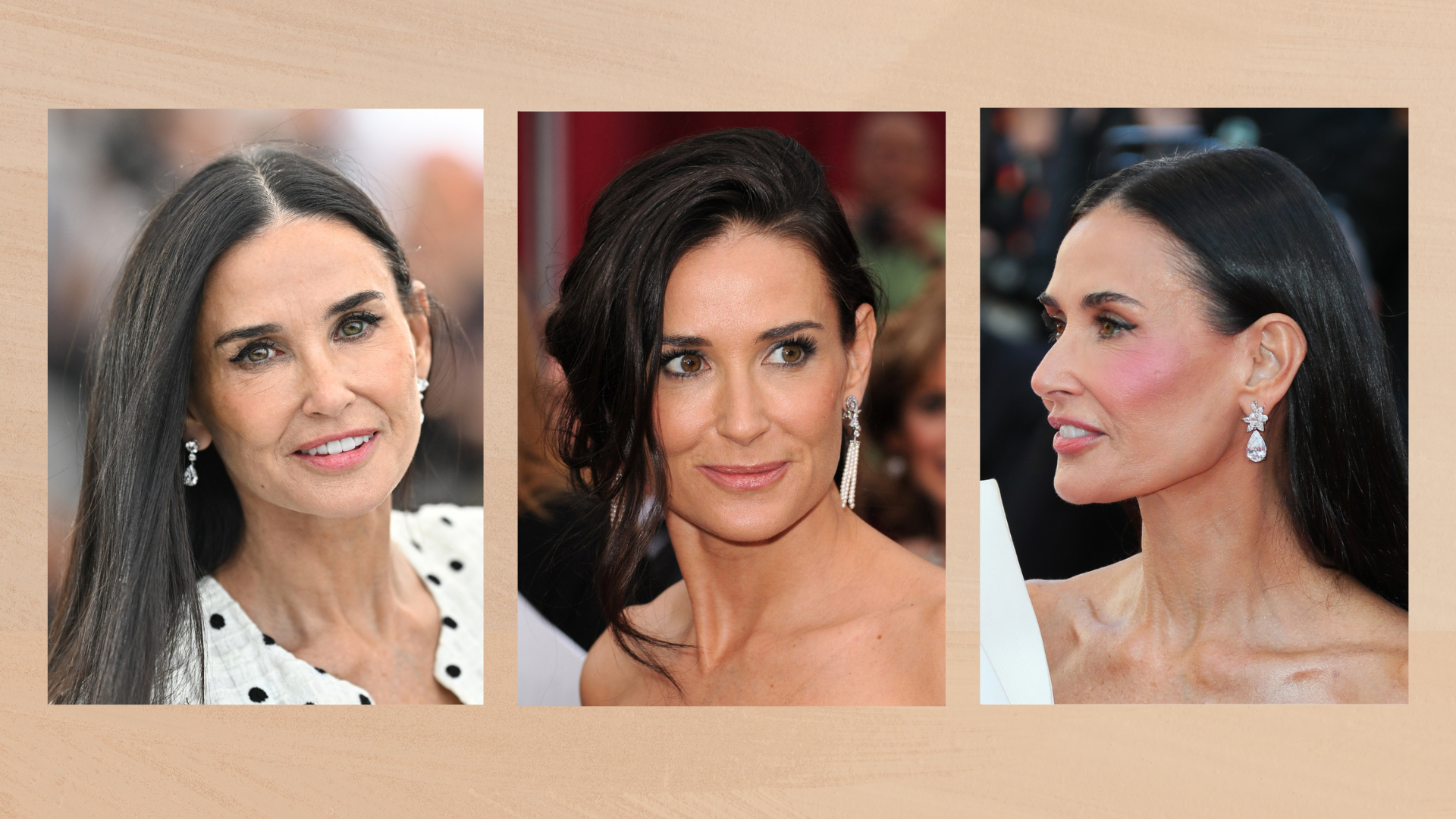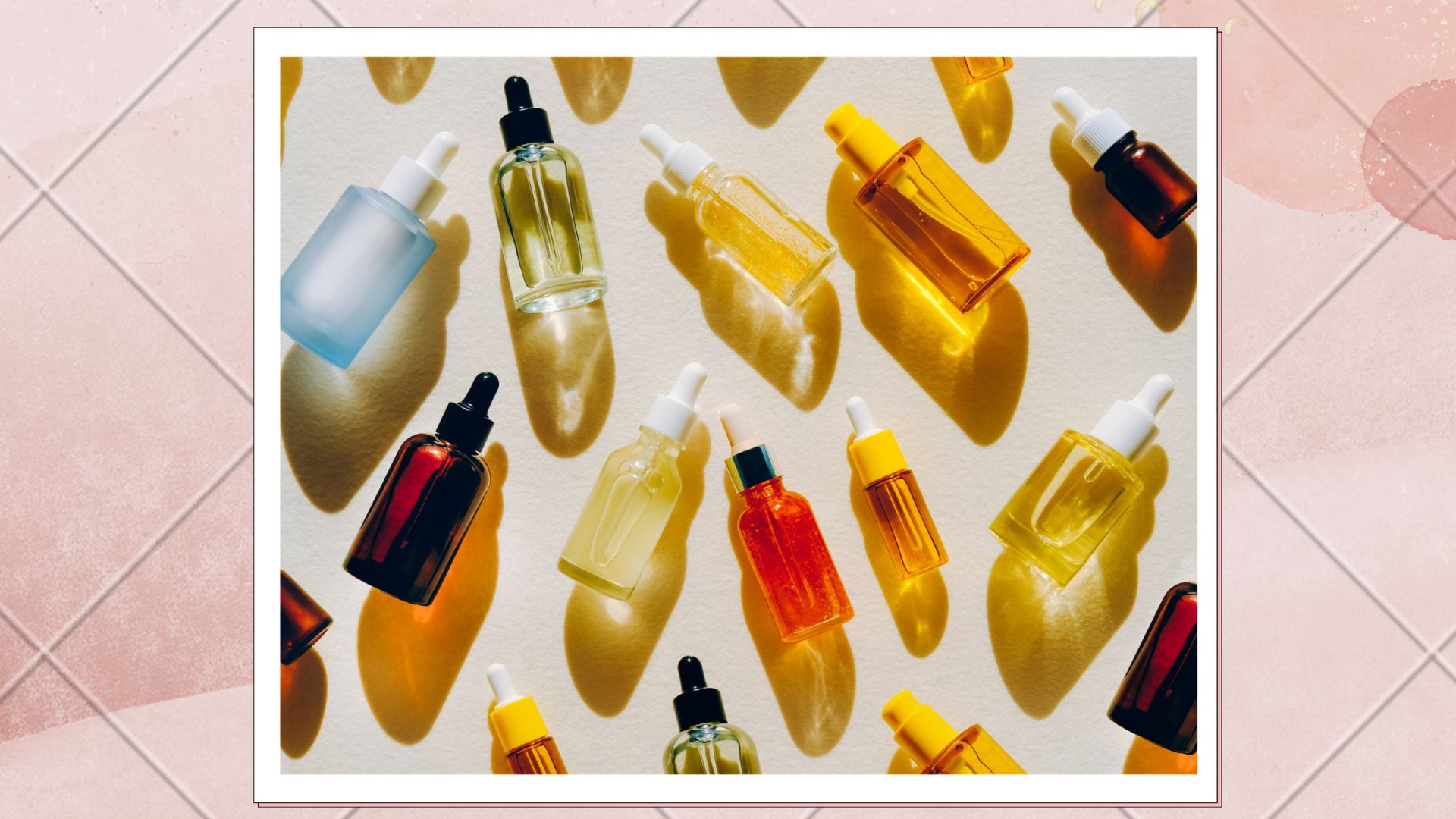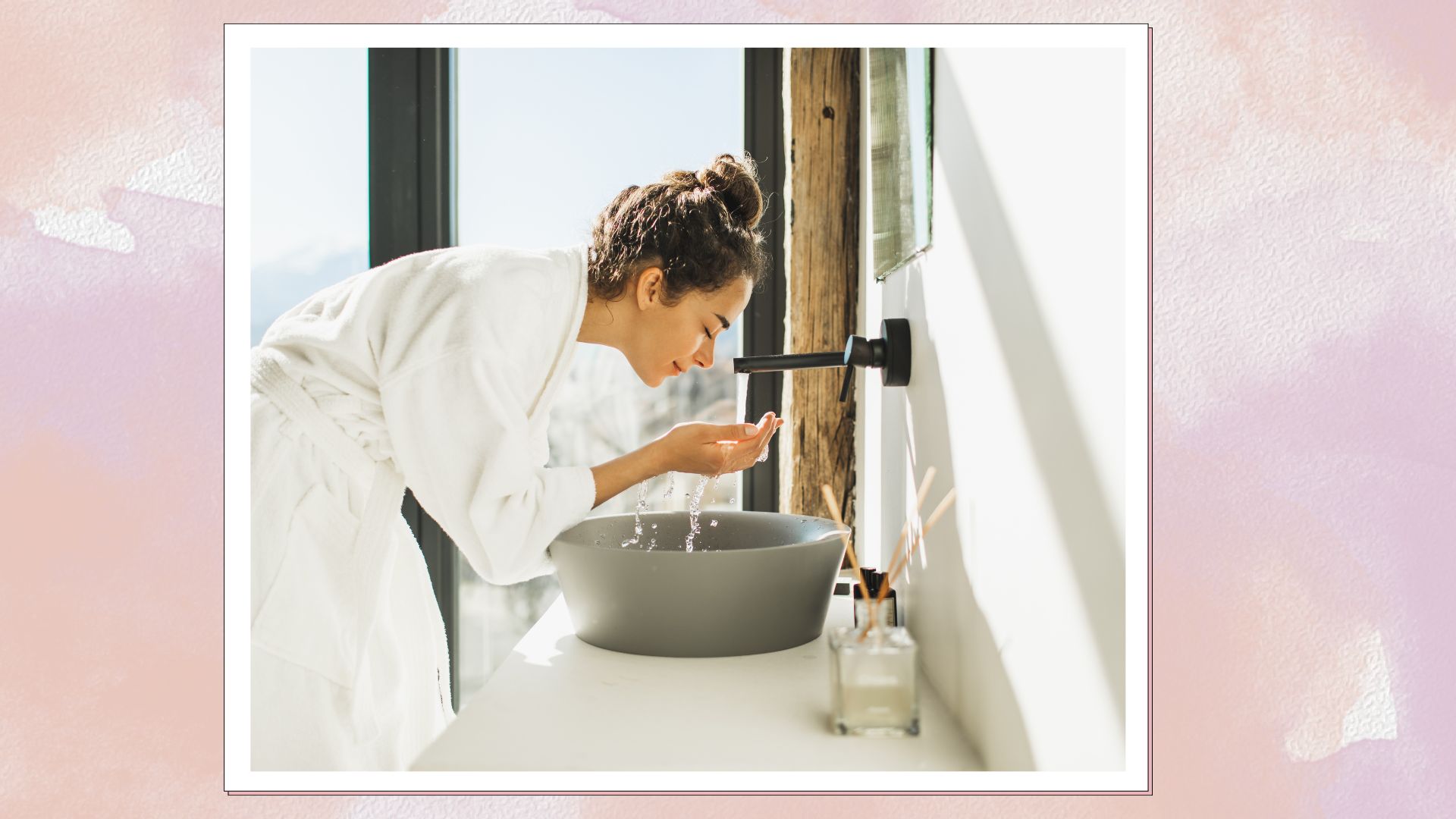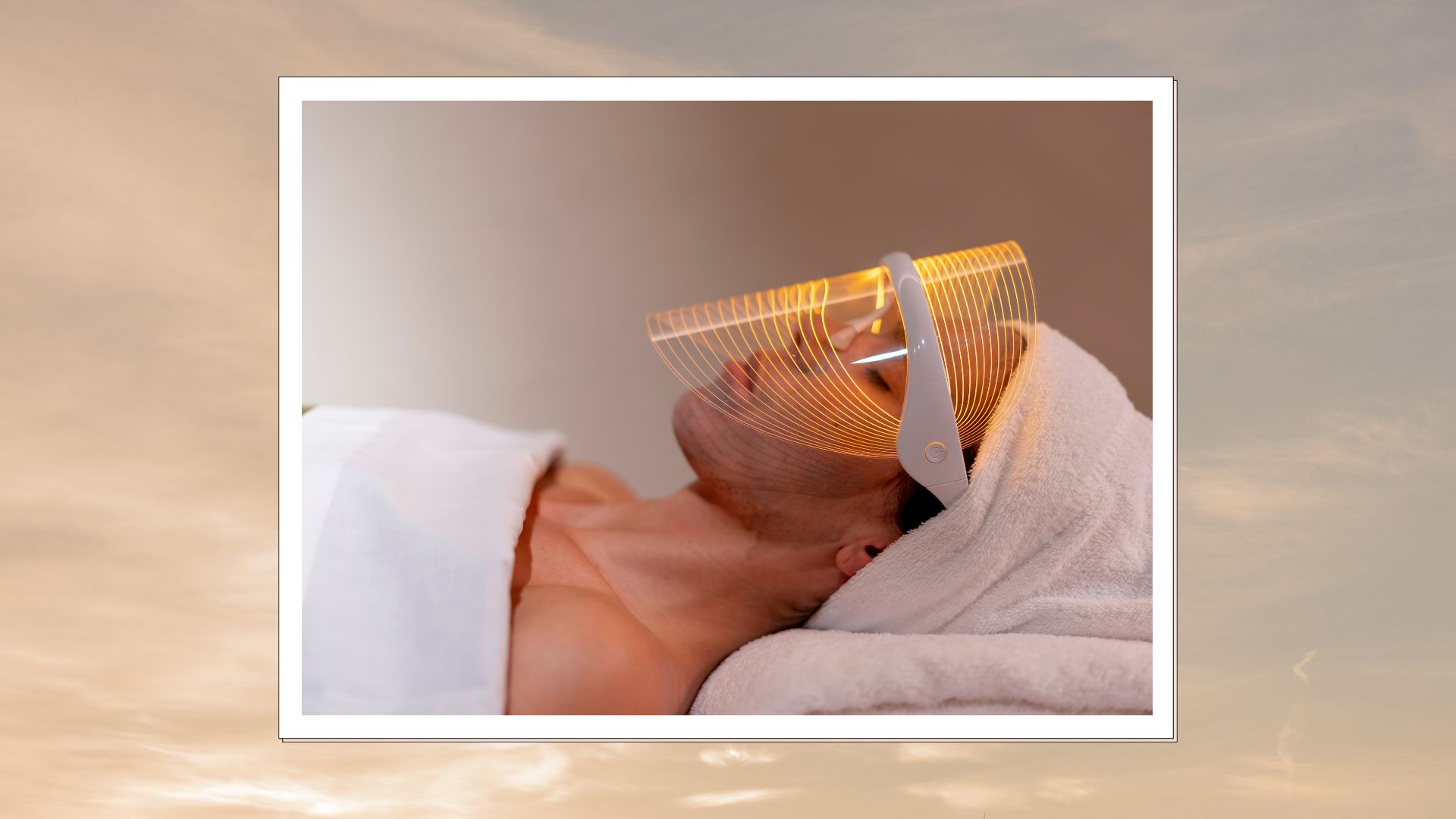Is facial acupuncture really 'natural Botox'? Here's what to know before booking
This ancient practice is trending as the secret to firmer, smoother skin, so we've asked the experts for all the details...


Touted as a natural alternative to Botox, facial acupuncture has recently gained traction as more people look to non-invasive treatments for skin rejuvenation.
Relatively painless with minimal side effects, the millennia-old practice is said to bolster your skincare routine and improve the health and appearance of the skin by stimulating the flow of qi (life energy) around the body. “Facial acupuncture is an interesting mix of ancient practises and modern aesthetic trends,” says Samira Kazemzadeh, acupuncturist at The Well Clinic. “It now reflects a bigger appetite for more natural and holistic approaches to wellness.” Considered the original ‘notox’ (an alternative to Botox ), facial acupuncture “not only treats the superficial signs of ageing but also addresses the underlying health concerns that contribute to ageing skin,” points out Sarah Bradden, renowned cosmetic acupuncturist.
With A-list fans (including Rita Ora, Jennifer Anniston and Ashley Graham) and over 70 million #facialacupuncture posts flooding TikTok, it’s clear this treatment is having a huge resurgence. Ahead, we break down everything you need to know – including what it entails, who it’s for and the list of beauty benefits.
What to know before facial acupuncture, per a beauty editor
A holistic practice that’s deeply rooted in Traditional Chinese Medicine (TCM), facial acupuncture involves the insertion of very fine, sterile needles into specific points on the face, neck and sometimes the body. “These needles help stimulate the flow of energy and blood circulation in the face, which can improve muscle tone, skin elasticity and collagen production,” says Kazemzadeh.
According to TCM, qi – or life energy – flows through the body along specific pathways known as meridians. If meridians become blocked, and energy cannot flow freely, inflammation can occur. “Inserting needles at specific acupuncture points can help unblock and regulate the flow of qi, promoting balance and health,” explains Dr John Tsagaris, practitioner of Traditional Chinese Medicine at HVN in Knightsbridge.
Originally used for medical purposes, practitioners observed that patients receiving treatment often experienced improvements in their skin’s appearance. “It’s this observation that led to the development of specific techniques focused on facial rejuvenation,” reveals Bradden. Now, it’s often compared with neurotoxins like Botox as it minimises the appearance of fine lines and wrinkles. Intrigued? Here, the experts break down the top things to know before trying facial acupuncture…
1. There are several pros
According to Bradden, the primary goals of facial acupuncture are to…
Sign up for the woman&home newsletter
Sign up to our free daily email for the latest royal and entertainment news, interesting opinion, expert advice on styling and beauty trends, and no-nonsense guides to the health and wellness questions you want answered.
- Enhance blood circulation: Improved blood flow delivers essential nutrients and oxygen to the skin, promoting a healthy glow.
- Stimulate collagen production: The needle insertion can trigger the body's natural collagen and elastin production, reducing the appearance of fine lines and wrinkles.
- Restore muscle tone: Acupuncture can help to relax overactive muscles and stimulate underactive ones, supporting facial structure and minimising sagging.
- Rebalance energy (qi): By targeting specific points, facial acupuncture aims to rebalance the body's energy, which can improve overall health and well-being.
- Aid lymphatic drainage: Improved circulation can promote lymphatic drainage to reduce puffiness and fluid retention in the face, contributing to a more sculpted and defined appearance.
- Reduce stress: Acupuncture can activate the parasympathetic nervous system, promoting relaxation and reducing stress levels, which can contribute to healthier skin.
- Address underlying issues: Many skin concerns are connected to underlying health issues, and facial acupuncture targets these root causes by rebalancing the body's energy.
2. It differs to Botox
Botox and facial acupuncture are both popular methods for reducing the appearance of fine lines and wrinkles – but they do differ significantly in their approach and overall effects. “As we become more aware of what we put on (and in) our faces, we’re seeing a rise in requests for Botox alternatives that look after the health of the skin,” says Bradden. Ahead, Tsagaris breaks down the key differences between the two:
Method
Botox: Botox works by temporarily paralysing muscles. It blocks the signals from nerves to the muscles, preventing them from contracting. This leads to a reduction in dynamic wrinkles, such as frown lines and crow's feet.
Facial Acupuncture: This involves inserting fine needles into specific facial and body points to stimulate blood flow, promote collagen production, and balance the body's energy (qi). It addresses both the surface and holistically underlying health imbalances.
Results
Botox: Results from Botox injections can be seen within a few days to a week and typically last several months.
Facial Acupuncture: Results from facial acupuncture are generally more gradual, with improvements often noticeable after several sessions. The effects can be more subtle and holistic, promoting overall skin health.
Risks and side effects
Botox: Common side effects include bruising, swelling and sometimes more severe issues like drooping eyelids or asymmetry if not done correctly. There is also a risk of developing resistance to Botox over time and fluid retention around the eyes.
Facial Acupuncture: Side effects, such as slight bruising or temporary redness at the needle sites, are usually minimal. It is generally considered safe with an unlikely risk of serious side effects.
Holistic health benefits
Botox: Botox is primarily a cosmetic treatment with no significant impact on overall health, except if performed for medical reasons.
Facial Acupuncture: Offers broader health benefits by addressing systemic issues, reducing stress and promoting overall well-being in addition to cosmetic improvements.
Cost
Botox: Botox can be relatively expensive, especially considering the need for repeated treatments every few months.
Facial Acupuncture: The cost can vary, but it is often considered more cost-effective in the long run, particularly considering its holistic health benefits.
3. Treatment can vary
It’s important to note that treatment can vary from practitioner to practitioner. Bradden begins with a full medical consultation followed by a tongue analysis. “Using the tongue helps to see where there is any disharmony in the system,” she tells us. “I cleanse the face, then I have a good look and feel of the face, neck and décolletage before inserting the fine specialist needles into the skin on the face, neck, ears and body.” At The Well Clinic, Kazemzadeh incorporates LED light therapy into the treatment to boost the results.
4. The pain is variable
Although the needles look somewhat scary post-insertion, there’s very little pain involved (I’d describe it as mild discomfort). “Needles are typically inserted very shallowly, just under the surface of the skin, at specific acupuncture points – and they are extremely thin, ranging from 0.16mm to 0.35mm in diameter, which helps minimise pain during insertion and manipulation,” assures Kazemzadeh.
Some areas are more sensitive than others and I found that my ears were particularly tender and even bled during treatment – something that Bradden says is a positive sign as it indicates clearing and release. “Most of my clients fall asleep,” she tells us, “which gives you an idea of how relaxing it is and not painful!”
Emma Stoddart is a freelance beauty journalist and self-confessed skincare aficionado with over five years’ industry experience. Emma has worked for some of the UK’s top women’s titles including Net-A-Porter, Stylist and Grazia. Her experience spans online and print as well as producing editorial shoots with some of the industry’s biggest artists, including Val Garland. Asides from working with them behind the scenes, she’s also had the chance to interview the likes of Patrick Ta, Pat McGrath, and Sam McKnight for all their insider tips and tricks.
-
 Demi Moore best beauty looks from across the years
Demi Moore best beauty looks from across the yearsFrom sultry, smokey eyes to her enviable long black locks, we look back at the actor's enviable hair and makeup looks
By Lucy Abbersteen
-
 All the different ways the royals have celebrated their birthdays over the years, from Kate Middleton's midnight cakes to the Queen's annual parade
All the different ways the royals have celebrated their birthdays over the years, from Kate Middleton's midnight cakes to the Queen's annual paradeYou'll be amazed by the weird and wonderful ways the royals have celebrated their birthdays...
By Lauren Clark
-
 Whenever I wear this lipstick, I'm asked what shade it is - I think I've found the perfect nude
Whenever I wear this lipstick, I'm asked what shade it is - I think I've found the perfect nudeAfter years of searching, our beauty writer reveals the butter-soft pink-brown lipstick she wears every single day
By Annie Milroy
-
 The one skin mistake most people are making, according to dermatologists
The one skin mistake most people are making, according to dermatologistsAre you guilty of this easy mistake? If so, you could be at risk of harming your skin.
By Rhiannon Derbyshire
-
 I've tried countless skincare subscriptions but KLIRA might be the best one yet
I've tried countless skincare subscriptions but KLIRA might be the best one yetOur senior beauty editor's detailed Klira review breaks down the results, restrictions and costs of the bespoke service
By Rhiannon Derbyshire
-
 According to dermatologists, most people are neglecting this key skincare step
According to dermatologists, most people are neglecting this key skincare stepPrioritising this one thing will make all your other products work harder...
By Rhiannon Derbyshire
-
 The best way to use an LED face mask at home to get the most effective results
The best way to use an LED face mask at home to get the most effective resultsFollow our experts’ advice for glowing skin…
By Emma Stoddart
-
 What are the side effects of LED face masks and are these high-tech gadgets actually safe?
What are the side effects of LED face masks and are these high-tech gadgets actually safe?Skin experts weigh in on the potential dangers of LED face masks…
By Emma Stoddart
-
 TheraFace LED Skincare Mask review: is it worth the major price tag?
TheraFace LED Skincare Mask review: is it worth the major price tag?Our LED-obsessed senior beauty editor puts the high-tech mask to test.
By Rhiannon Derbyshire
-
 Gorgeous smokey eye makeup looks to bookmark now and recreate later
Gorgeous smokey eye makeup looks to bookmark now and recreate laterThese celebrity makeup looks provide the ultimate smokey eye inspiration
By Lucy Abbersteen